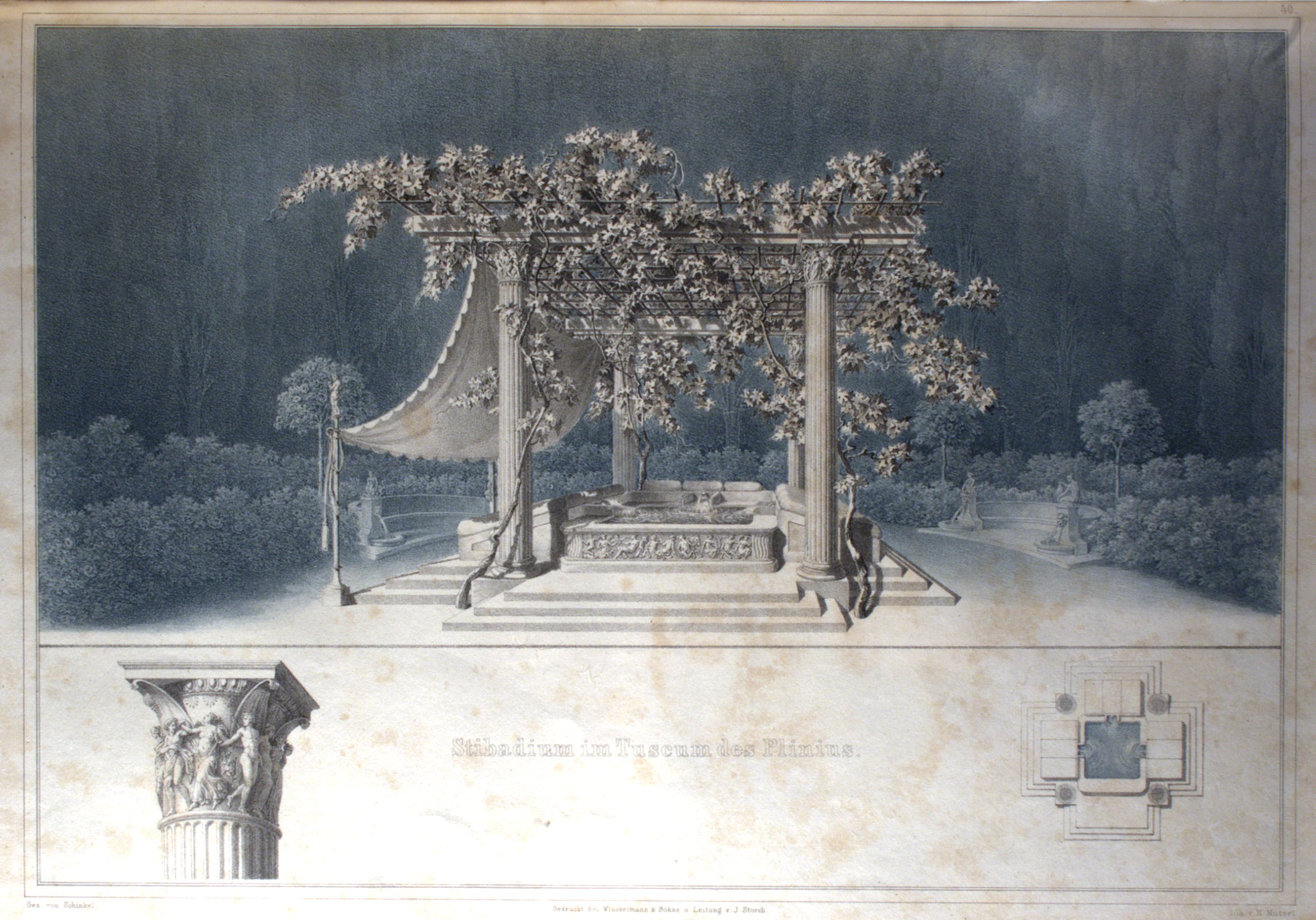Stibadium on:
[Wikipedia]
[Google]
[Amazon]
 The ''stibadium'' (: ''stibadia'') is a later form of the
The ''stibadium'' (: ''stibadia'') is a later form of the  Films about
Films about
Rogue Classicism
Ancient Roman furniture History of furniture
 The ''stibadium'' (: ''stibadia'') is a later form of the
The ''stibadium'' (: ''stibadia'') is a later form of the ancient Roman
In modern historiography, ancient Rome is the Roman people, Roman civilisation from the founding of Rome, founding of the Italian city of Rome in the 8th century BC to the Fall of the Western Roman Empire, collapse of the Western Roman Em ...
''lectus triclinaris'', the reclining seat used by diners in the ''triclinium
A ''triclinium'' (: ''triclinia'') is a formal dining room in a Ancient Rome, Roman building. The word is adopted from the Greek language, Greek ()—from (), "three", and (), a sort of couch, or rather chaise longue. Each couch was sized to ...
''. Originally, the ''lecti'' were arranged in a group of three in a semi-circle. The ''stibadium'' was a single semi-circular couch, fitting up to a dozen people, which replaced the triple group of ''lecti'' in the dining-room, frequently in alcoves around the centre of the room. In large Roman villas ''stibadia'' often became very elaborate.
This furniture
Furniture refers to objects intended to support various human activities such as seating (e.g., Stool (seat), stools, chairs, and sofas), eating (table (furniture), tables), storing items, working, and sleeping (e.g., beds and hammocks). Furnitur ...
is also called sigma.''The Roman banquet: images of conviviality'', Katherine Dunbabin, 2003, p. 166 This name comes from the lunate sigma
Sigma ( ; uppercase Σ, lowercase σ, lowercase in word-final position ς; ) is the eighteenth letter of the Greek alphabet. In the system of Greek numerals, it has a value of 200. In general mathematics, uppercase Σ is used as an operator ...
(upper case C, lower case ϲ) which resembles, but is not at all related to, the Latin letter
The Latin script, also known as the Roman script, is a writing system based on the letters of the classical Latin alphabet, derived from a form of the Greek alphabet which was in use in the ancient Greek city of Cumae in Magna Graecia. The Gree ...
C and was used in Eastern forms of Greek writing and in the Middle Ages.
The ''stibadium'' was originally an outdoor seat but was introduced indoors in the 2nd and 3rd centuries AD because the shape was more convenient for entertaining and as ''triclinia'' became larger and more elaborate.
 Films about
Films about ancient Roman
In modern historiography, ancient Rome is the Roman people, Roman civilisation from the founding of Rome, founding of the Italian city of Rome in the 8th century BC to the Fall of the Western Roman Empire, collapse of the Western Roman Em ...
'' convivia'' often feature a ''stibadium'' rather than a ''lectus''.
Examples
Roman villas with ''stibadia'' include the: * Roman villa of Faragola * Pliny's villa "in Tuscis"Pliny LII. To Domitius Apollinaris https://www.bartleby.com/9/4/1052.html * Villa El Ruedo (Spain) * Nymphaeum Utere Felix (Carthage)See also
* ''Accubitum
''Accubitum'' (: ''accubita'') was one name for the ancient Roman furniture couches used in the time of the Roman emperors, in the ''triclinium'' or dining room, for reclining upon at meals. It was also sometimes the name of the dining room its ...
''
* Ancient Roman cuisine
The cuisine of ancient Rome changed greatly over the duration of the civilization's existence. Dietary habits were affected by the political changes from republic to empire, and Roman economy#Trade and commodities">Roman trading with foreigners ...
* '' Klinē''
Notes
External links
{{Commons category-inline, StibadiaRogue Classicism
Ancient Roman furniture History of furniture